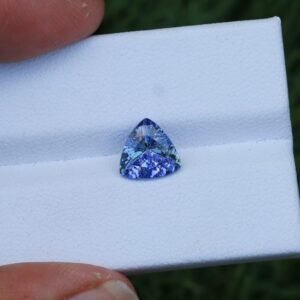Information About Emerald !!
The name is of ancient origin. The Latin smaragdus appears, in fact, to have referred to the stone we call emerald, which is now considered as a distinct species. It labasically the green variety of beryl, although not all gemquality green beryls are called emeralds: yellow-green stones are called heliodors; soft blue-green or even pale green specimens (their color due to iron, not chromium, as in emerald) are called aquamarines.
Appearance The typical color is a beautiful, distinctive hue known, in fact, as emerald green and is due to traces of chromium in the crystal structure. But emeralds can be light or dark green, bright green or leaf green. The vitreoul luster is not outstanding, and is strongest in medium-light stones with few inclusions. All emerald contains inclusions, although in the best quality stones, these are very faint and not visible to the naked eye. They show up under a 10x, 20x, or 40x lens. The most common shape for gems is the step or trap cut, which is also known as the emerald cut.
They are occasionally given a mixed, oval cut, while antique stones are found with hexagonal, step cuts, cabochon cuts, or pear shapes with a hole in them, often used as pendants.
Distinctive features The typical emerald color is virtually unmistakable. It is only equalled by some very rare specimens of jadeite jade, which, however‘, is less transparentand has different physical properties. To the initiated, theinclusions in emerald can be highly distinctive: a bubble ofgas in a liquid (like a spirit-level), within spindle-shaped or,more rarely, truncated prismatic cavities; birefringent, circular plates of mica; multifaceted pyrite crystals or calcite rhombohedra. However, a microscope is almost always needed to recognize them. Although not the typical emerald color, some green tourmalines may look similar, but they can be distinguished either by‘ their marked pleochroism, or by the fact that tourmalines which are given an emerald cut display alternating, longitudinal lines of lighter or darker color, when viewed through the table facet.‘ Olivine may also be a verdant green color vaguely similar to that of some atypical emeralds; but the powerful birefringence of olivine is detectable with a simple lens, a double image of the opposite facet edges being clearly visible in certain directions through the table facet. In any case, the density of either tourmaline or olivine immediately distinguishes the stone from emerald.
Occurrence The biggest and most beautiful emeralds come from the famous Chivor and Muzo mines of Colombia. Much smaller quantities of emeralds, mostly of medium-light color, come from Brazil, and small, very intensely colored stones, characterized by numerous minute inclusions of molybdenite with a metallic appearance, are found in the Transvaal.
In the last few decades, increasing quantities of emeralds have been found in a series of small deposits in East Africa—principa|ly in _Z_i_m_ba_bwe_,_ Zambia, and Tanzania. These are quite a strong color, sometimes with a bluish green tinge;_and they often contain mica plates and, sometimes, thin crystal needles. The most famous of these emeralds are the ones from §andawana in Zimbabwe, which are valued for their color. Emeralds with similar character- istics also come from the mountains of India and Pakistan as well as the Soviet Union (Urals), and formerly Austria: Value Stones of fine color, weighing more than 2 carats, are among the most highly valued gemstones, and their price may equal or exceed that of diamonds. Less ideally colored varieties-—too dark or too pale–are worth quite a lot less; and if they are slightly turbid as well, the value is reduced even further.
Simulants and synthetics The Romans are known to have imitated emerald with skilfully worked green glass. Glass was also used in later centuries, extraneous particles sometimes being incorporated to simulate inclusions.
Doublets have also been used as imitations, with a lower portion of green glass and a top portion of garnet, or triplets, with a layer of colored cement sandwiched between two layers of colorless beryl, synthetic spinel, or quartz, Synthetic emeralds have likewise been widely produced over the last few decades. Generally of good color, these are mainly distinguished from the natural variety by their inclusions and other growth features. There are a lot of these synthetic stones about, but their cost is quite high, so that the market for them is saturated.






























Add comment